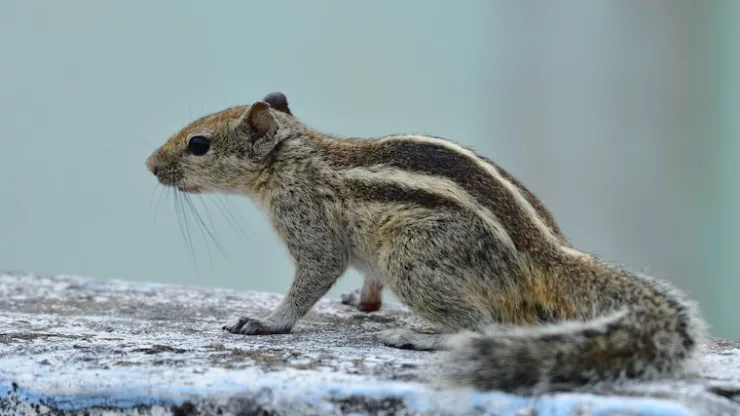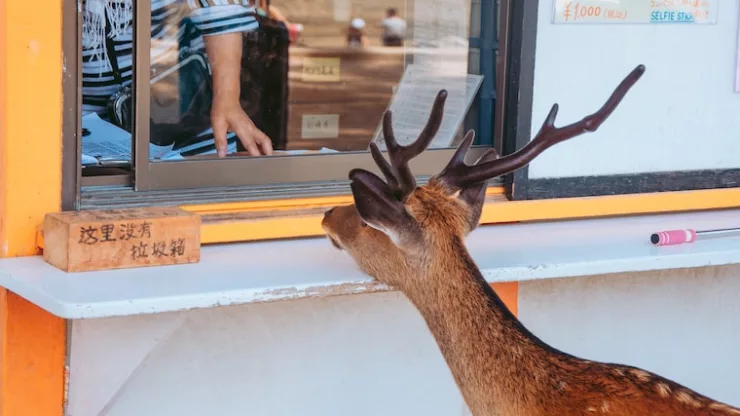The relationship between humans and the environment has been explored for centuries, prompting many to ponder how to protect and conserve the planet’s biodiversity.
Today, urbanization is a growing problem, as human development continues to encroach upon wild habitats.
This trend of urbanization has caused a number of issues for both humans and wildlife, including the displacement of species, the destruction of habitats, and the conflicts that arise from these changes.
While the effects of urbanization are far-reaching, there are still ways for humans and wildlife to coexist, and with innovative solutions, a more sustainable future is possible.
Jump to Section
Introduction
The relationship between humans and wildlife is a complex one, particularly in urban environments.
As cities continue to grow, the impact of human development on wildlife is becoming more and more severe.
While it is important to explore ways to protect the environment, it is also essential to consider the ways in which humans and wildlife can coexist in urban areas.
The Impact of Urbanization on Wildlife
Urbanization has had an immense impact on the natural environment, particularly on wildlife.
As cities and towns expand, they often encroach upon wild habitats, which can lead to the displacement of species and the destruction of their habitats.
This can have serious consequences for both humans and wildlife, making it essential to find ways to mitigate conflict between the two.
Understanding the Consequences of Human Development
The consequences of human development are far-reaching and can have a significant impact on the environment.
For example, when human development encroaches upon wildlife habitats, it can lead to the displacement of species, the destruction of habitats, and the loss of resources.
This can have a devastating impact on both humans and wildlife, leading to conflict between the two.
Assessing the Loss of Habitats and Resources
The destruction of habitats and resources can have a significant impact on wildlife.
When habitats are destroyed, species are left without the resources they need to survive, leading to displacement and conflict between humans and wildlife.
This can have a far-reaching impact, as species are forced to migrate to other areas in search of food and shelter.
Strategies for Mitigating Conflict between Humans and Wildlife
In order to mitigate conflict between humans and wildlife, it is essential to understand the consequences of human development on wildlife habitats.
It is also important to develop strategies for protecting and conserving wild habitats and resources.
This can include creating buffer zones between urban areas and wildlife habitats, limiting hunting and fishing, and offering incentives for sustainable development.
Examining Current Solutions for Human-Wildlife Coexistence
There are a number of current solutions for human-wildlife coexistence.
These include the implementation of laws and regulations to protect wildlife and their habitats, the use of wildlife corridors to facilitate the movement of species, and the creation of parks and reserves to provide safe havens for wildlife.
Additionally, wildlife-friendly farming practices can also be implemented to protect species and their habitats.
Exploring Innovative Solutions for a Sustainable Future
In addition to the current solutions for human-wildlife coexistence, there are also ways to explore innovative solutions for a sustainable future.
This could include the development of green technologies to reduce the impact of human development on wildlife habitats, the implementation of educational programs to raise awareness about wildlife conservation, and the use of public-private partnerships to promote sustainable development.
Exploring Human-Wildlife Coexistence Solutions
The coexistence of humans and wildlife is essential for the health of both, and it is important to explore solutions that can promote a sustainable future.
This includes the implementation of current solutions, such as laws and regulations to protect wildlife, as well as the exploration of innovative solutions, such as green technologies and public-private partnerships.
With a combination of efforts, it is possible to create an environment where humans and wildlife can coexist in harmony.
FAQ
What are the consequences of human development on wildlife habitats?
The consequences of human development on wildlife habitats can be far-reaching. This includes the displacement of species, the destruction of habitats, and the loss of resources.
Additionally, human development can also lead to conflict between humans and wildlife.
What strategies can be implemented to mitigate conflict between humans and wildlife?
There are a number of strategies that can be implemented to mitigate conflict between humans and wildlife.
These include the creation of buffer zones between urban areas and wildlife habitats, the implementation of laws and regulations to protect wildlife, the use of wildlife corridors to facilitate the movement of species, and the implementation of wildlife-friendly farming practices.
What innovative solutions can be explored for a sustainable future?
Innovative solutions for a sustainable future can include the development of green technologies to reduce the impact of human development on wildlife habitats, the implementation of educational programs to raise awareness about wildlife conservation, and the use of public-private partnerships to promote sustainable development.
I’m a nature enthusiast and creator of Metro Wilds and have spent years exploring the great outdoors.
With a passion for environmental conservation and sustainability, I have dedicated my career to writing about the beauty and wonders of nature, as well as the threats facing our planet.
Contact me at [email protected] for assistance.





